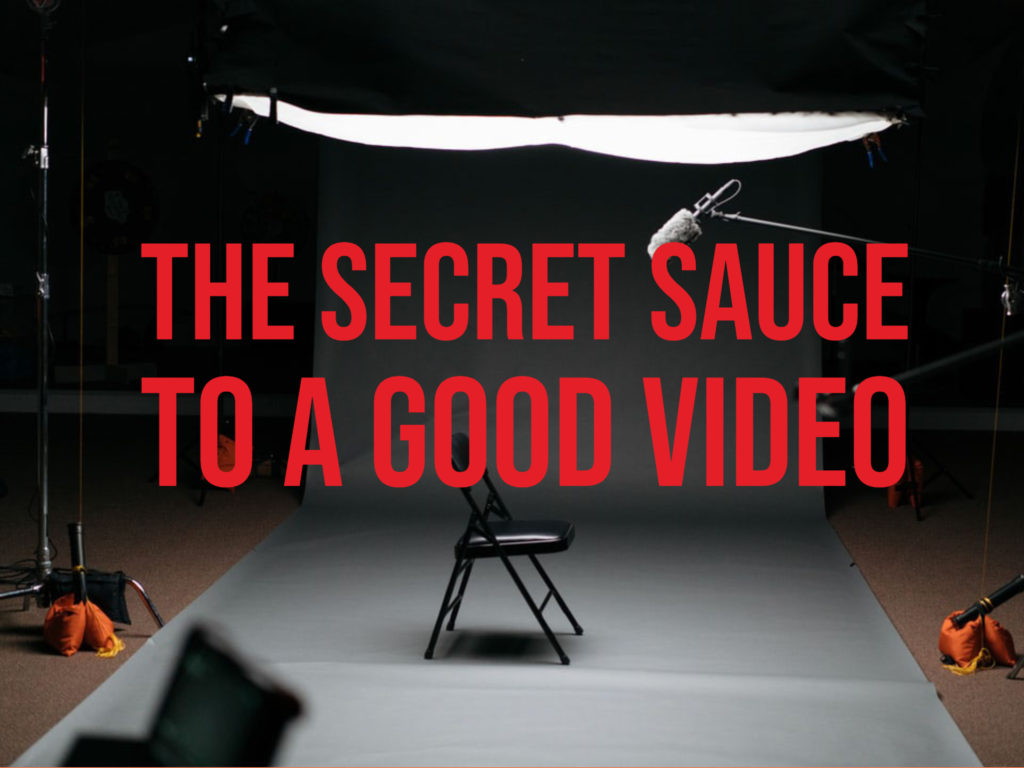What is the role of music in videos
An effective video is a composition of sorts. It consists of the right elements like video titles, description, thumbnail, storytelling, and finally music.
The role of music is important akin to the old age saying – “the cherry on top.”
I’m often asked by clients about the subject of music. In short, music enhances the viewer’s experience when watching a video. It keeps them on your video. And at the end of the day, that’s your number 1 goal as a video producer.

In a study of psychological effects of music in film, Nanette Nielsen (an academic in musicology and philosophy) and her team conducted a field study. It involved using active participation of the audience in the drama or play.
Through active participation, the audience could influence the plot.
In the study, they used music and sound to enhance the experience. Their conclusion:
“Despite the fact that we had put together a rather conventional soundtrack, we learned from the players that they did not perceive the music as something that supported a linear story. Instead, music played a part in how they understood their own role in the drama.”
But you don’t need an academic study to emphasize the power of music in a video.
In fact, take a look at some of the most famous movies of all time.
Like Star Wars.
Almost everyone has heard of the Imperial march song from Star Wars. It’s a staple in all Star War movies.
It’s ingrained in our brain because of how effective it was used in the movies. It has that foreboding sound, which was set against the image of Darth Vader leading his unstoppable legion of doom.
The music really nailed it for those Star Wars scenes, and delivered that foreboding feeling for fear and despair:
But that same music can be used for a less serious tone. The Imperial March has been used many times in pop culture and in parody videos on YouTube.
Here is a popular parody of this foreboding music in a car commercial:
Notice how the same music can be used to deliver a serious tone AND to convey a comedic tone (via parody). It’s effective in both cases.
When used properly in the right context, music can really make your video memorable.
When to use music in videos
The most popular use of music is the intro or outro of videos. Remember the importance of pattern interrupts.
If you haven’t read my article about the importance of grabbing your audience’s attention in the first 10 seconds, then check it out here.
Catchy music is a great way to grab a viewer’s attention.
Consider a typical New Yorker. Most New Yorkers like to “listen” to their videos. This is why podcasts in video form are so popular. You can just listen to a YouTube “podcast” video, while being stuck in a packed subway.
You might be doing something interesting on a visual level, but if you’re a typical New Yorker stuck in that subway… There’s no way they’ll be able to see it.

But if you engage their auditory senses with powerful music, you can still grab their attention.
Think of a video as a composition with the sole goal of getting your viewer’s attention so you can deliver your message.
By adding music to your videos, you engage another one of their senses thereby increasing your chances of grabbing and keeping their attention.
How to use music in videos
It’s all about the tone. What’s your message? And what’s the best way to deliver that message?
Are you trying to be funny? Or are you trying to send an important message?
A video about your holiday party in Disney World will have a vastly different tone to a video about conducting business during the coronavirus pandemic.
Always remember that music should complement and not overpower the other elements of the video.
If you are editing your own videos, consider these general guidelines from Premiumbeat:
- Overall Mix Level: -10db to -14db
- Dialogue: -12db to -15db
- Music: -18db to -22db
- Sound Effects: -10db to -20db with occasional spikes up to -8db.
You never want to peak or “clip” your audio. It’s better to have lower audio and give the viewer the option to turn up the volume.
It can get technical, especially when you get to editing videos and mixing sound. There are numerous YouTube tutorials on the subject, if you are doing the DIY route with video production.
But I always recommend leaving it to the experts when it comes to video production.
Where to get music for videos
Whenever you’re using music, always consider the Fair Use doctrine. As much as you’d like to use “Enter the Sandman” as your intro track to your vlog, it’s not the legal thing to do.
Always look for copyright free music or music. This is especially important for YouTube, which has cracked down on the illegal use of copyrighted music.
Personally, I use Artlist.io as my go-to for music. It does have a $199 annual fee. With that subscription, you’ll have access to hundreds of songs that won’t result in a copyright strike on YouTube.
What’s more, Artlist has an easy-to-use system to find music.
In Artlist, you can sort by “Mood”. These can be uplifting, powerful, happy, funny, love, playful and many other moods. This is especially important because every video you make will have different tones.
The tone of the music must match the tone of your video.
You don’t want funny clown music when you’re video is about something serious, like discussing the legal ramifications of divorce or finding the right financial advisor for retirement planning.
Another option is Videohive or Envato (who acquired Videohive). Just like Artlist, Envato has a subscription to hundreds of music files. These can also be sorted by mood.
But if you don’t want a music subscription, you can also buy music tracks one by one. Perhaps, all you need is just 1 music. Envato would be the right choice for you.
For a “free” option, take a look at Soundcloud or YouTube. Just search for “copyright free music”. Often, you’ll be directed to various independent music producers.
Contact them about their music. More often than not, they will allow you to use their music for credit (as it gives them free exposure and publicity). Just make sure to keep these affirmations on file in case you do get a strike on your video.
You’ll need that as proof that you’re allowed to use their music.
Personally, I would just use Artlist or Envato. Yes, you have to pay for the use of music. But it’s much better to use this music rather than get sued or lose your YouTube channel.
Do what’s right and pay attention to the Fair Use principles.
Final Word
The famed composer Igor Stravinsky said it best when it comes to the role of music in film:
“Film music should have the same relationship to the film drama that somebody’s piano playing in my living room has on the book I am reading.”
💡💡 Always remember 💡💡
Music should complement NOT overpower the visual elements of the video.
2Bridges Productions Copyright © 2017. Address: 25 Monroe St, New York, NY 10002. Phone: 516-659-7074 – All Rights Reserved.
We are a participant in the Amazon Services LLC Associates Program, an affiliate advertising program designed to provide a means for us to earn fees by linking to Amazon.com and affiliated sites.

